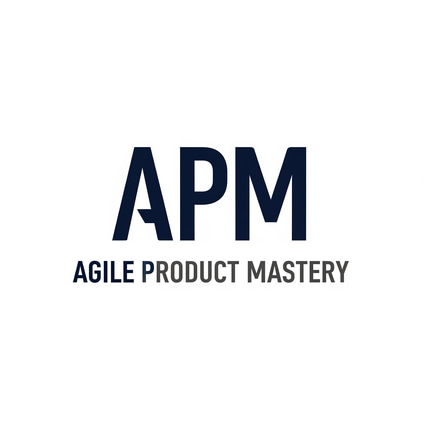The Ultimate Guide to Agile Product Ownership (2025 Update)
Master Agile Product Ownership in 2025! This guide covers key strategies, frameworks, and tools to help you excel in an evolving Agile landscape
Written by: Matt Gregory - Founder Agile Product Mastery
3/29/20254 min read


Ready to Lead Agile Product Ownership?
Agile product ownership is accelerating. Product owners have high expectations in 2025, and if you're not prepared, you could left behind. You may have heard of agility in product management, but have you mastered product ownership in a fast-paced, ever-changing environment?
In this ultimate guide we break down everything you need to know to thrive in your role, tackle common pain points and stay ahead of the curve. Whether you're just starting out or looking to hone existing skills, this guide will arm you with the strategies, tools and mindset to be a successful product owner.
Agile Product Ownership?
Let's quickly define Agile Product Owner before we continue.
Product owners make crucial decisions on product vision, strategy, and features. They connect the development team to the company to ensure the product meets customer wants and corporate goals. The product owner in an Agile setting must collaborate, prioritize, and iterate.
Product Ownership Matters More Than Ever in 2025
Digital-age agile product ownership
Digital transformation is accelerating. Product owners must be agile, strategic, and data-driven due to new technology, market upheavals, and customer needs. Agile product ownership is critical for complexity management and competitiveness.
Product owners must now master market research, user experience design, change management and technical development using new tools and frameworks. The role is now more integrated and high-stakes.
Major Challenges for Product Owners in 2025
The rewards and challenges are huge. Some of the biggest problems product owners face:
• Balancing stakeholder expectations: Aligning business units and stakeholders with product priorities is difficult.
• How do you prioritize with so many ideas?
• Remote teams: Virtual teams across time zones and cultures provide communication and collaboration challenges.
• Market shifts: Keeping up with continuously changing client wants and industry developments is difficult.
This handbook will address each issue with actionable solutions and best practices.
The 2025 Agile Product Ownership Framework
Agile product ownership remains the same, but tools and methodologies change. Let's examine the essentials of current Agile product ownership.
1. Vision/roadmap creation
A product owner's journey begins with a compelling vision of the product's future. A product strategy must unite the team and stakeholders around this vision. A roadmap should:
• Consider long-term and short-term needs
• Be adaptable to change
• Inform the team of progress and priorities.
Key takeaway? Effective roadmaps combine ambition and flexibility.
2. Prioritizing and Backlog Management
Product owners must prioritize backlog management. While prioritizing features, bug fixes, and user stories is difficult, it can be done with the appropriate methodology.
Here are some priority tips:
• MoSCoW Method: Group features by Must, Should, Could, and Won't.
• Value vs. Complexity Matrix: Consider a feature's value and implementation effort.
• Kano Model: Classify features by functionality and consumer satisfaction.
A clear and well-organized backlog keeps the team focused on the most important tasks.
3. Managing Stakeholders
Product owners manage stakeholder expectations in Agile. You must satisfy customers, executives, and developers while assuring everyone shares the product's vision.
Tips for stakeholder management:
• Involve stakeholders early and regularly in development.
• Setting reasonable expectations: Communicate timetables, risks, and progress.
• Promote teamwork and stakeholder dialogue.
An empowered product owner can foster collaboration and transparency to improve decision-making.
4. Continuous Feedback & Iteration
Agile is iterative. Successful product owners accept criticism and modify product direction based on real-world data. So how do you make feedback fundamental to your process?
• To understand client pain areas and desires, interview them regularly.
• User testing: Early user insights from prototypes and MVPs.
• Analytics and KPIs: Measure product success and iterate swiftly.
Always be flexible based on user feedback. Delivering incremental value is key.
Real World Examples of Successful Agile Product Ownership
Case Study 1: FinTech Platform Transformation
One FinTech product owner had to modernize an outdated platform for customers. Using Agile methods to manage stakeholder expectations and prioritize features, they released an MVP that immediately added value to users, increasing customer satisfaction by 25% in the first quarter.
Key takeaway: Even in complicated, regulated sectors, product ownership requires early and frequent value delivery.
Case Study 2: Global SaaS Scaling
The owner of a SaaS product had to scale worldwide. They increased the product's user base by 50% in six months by iterating on user feedback and aligning the roadmap with global market needs.
Key takeaway: Agile product owners succeed by adjusting to market demands without losing vision.
Resolving Agile Product Ownership Issues
Agile offers flexibility, but product owners should avoid typical mistakes.
1. Overcommitting: It's tempting to add unnecessary features. Deliver the most valuable features first.
2. Not communicating with stakeholders: Misalignment and disillusionment can result from infrequent updates. Keep stakeholders informed.
3. Ignoring technological limits: Product owners and developers must collaborate to understand technical constraints and feasibility.
Staying aware of these dangers helps product owners avoid typical blunders and develop customer-focused products.
Tools Every Agile Product Owner Needs
The appropriate tools may make or kill an Agile product owner. These can streamline your workflow:
• Jira: Backlog and sprint planning tool.
• Trello: Helps visualize workflows and manage tasks.
• Miro: Great for user story mapping and brainstorming.
• Productboard: A complete customer-focused product strategy platform.
These tools simplify communication, progress tracking, and backlog management.
Are You Ready for Agile Product Owner Success?
Agile product ownership in 2025 requires adaptability, collaboration, and a relentless focus on value, not just new tools or approaches. Continuous improvement is crucial to success when managing stakeholder dynamics, a growing backlog, or user feedback-driven product iterations.
Ready to improve Agile product ownership? You control the future. Learn, adjust, and watch your product (and career) fly.
What agile product owner tactics have worked best for you? Leave your comments below and sign up for our email for more effective Agile Product Ownership suggestions!
Ready to master your Product Owner journey?
Grab your copy of Agile Product Mastery: The Product Owner's Playbook to Strategy, Execution & Influence and take your skills to the next level.
© Agile Product Mastery — Build a career that scales. Not one that burns out.
Powered by Baltimore Advisory Pty Ltd — ABN 97 678 312 475 — All rights reserved
Follow us on LinkedIn
